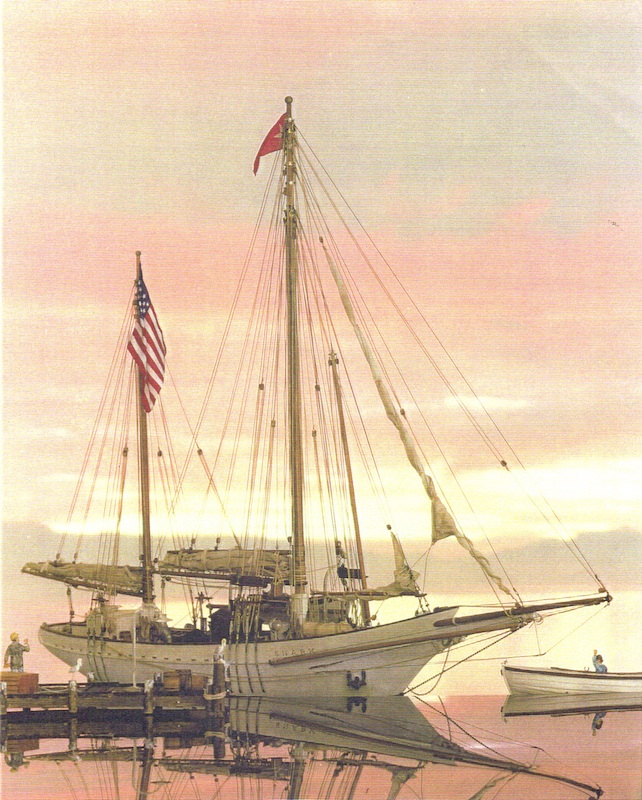“The houses of the chiefs are generally large, for the kind of building, – from forty to sixty feet in length, twenty or twenty-five in breadth, and eighteen or twenty in height at the peak of the roof.”
“The sides and ends, as well as the roof, are of thatch, and the whole in one apartment. They are generally without windows, or any opening for light or air, except a wide door in the middle of a side or end.”
“In the back part of the house, the personal property and moveables, such as trunks, boxes, calabashes and dishes for water, food, &c. are deposited; while the mats for sitting, lounging, and sleeping are spread near the door.”
“Every chief has from thirty to fifty and an hundred personal attendants, friends and servants, attached to his establishment; who always live and move with him, and share in the provisions of his house.”
“All these, except the bosom friends, or punahele, have different offices and duties: – one is a pipe lighter, another a spittoon carrier, a third a kahile bearer, &c. Others with their families, prepare, cook, and serve the food, &c.”
“All the former, from the bosom friend, or punahele, to the pipe lighter, eat from the same dishes and calabashes with their master; and form, at their meals, a most uncouth and motley group.”
“In every respect indeed, as well as in that of eating, the household servants of the whole company of chiefs, from the king to the petty headman of a village, seem to enjoy a perpetual saturnalia.”
“The formation of this establishment takes place immediately on the birth of a chief, whether male or female. A kahu or nurse is appointed, who assumes all the care of the parent, and directs the affairs of the child, till he is old enough to exercise a will of his own.”
“Thus, often, very little intercourse takes place between the parents themselves, and the young chief; the former not unfrequently residing at a different district, or on a different island.”
“The present prince and princess, who are both children, have each separate houses, and a large train of attendants: and though their guardians of state reside near them, they are left very much to their own will, or to that of their kahus or nurses.”
“I have seen a young chief, apparently not three years old, walking the streets of Honoruru as naked as when born, (with the exception of a pair of green morocco shoes on his feet,) followed by ten or twelve stout men, and as many boys, carrying umbrellas, and kahiles, and spitboxes, and fans, and the various trappings of chieftainship.”
“The young noble was evidently under no controul but his own will, and enjoyed already the privileges of his birth, in choosing his own path, and doing whatever he pleased.”
“This portion of the inhabitants spend their lives principally in eating and drinking, lounging and sleeping; in the sports of the surf, and the various games of the country; at cards, which have long been introduced …”
“… in hearing the songs of the musicians, a kind of recitation accompanied by much action; and in witnessing the performances of the dancers.”
“They are not, however, wholly given to idleness and pleasure. It is customary for the male chiefs to superintend, in a degree, any work in which their own vassals, at the place where they are residing, are engaged, whether of agriculture or manufacture …”
“… and the female chiefs, also, overlook their women in their appropriate occupations, and not unfrequently assist them with their own hands.”
“A great change appears about to take place among the chiefs, in the general manner of employing time. The palapala and the pule, letters and religion, as presented by the Missionaries, are happily beginning deeply to interest their minds …”
“… and books and slates, I doubt not, will, as is the fact already, in individual cases, soon universally take the place of cards and games, and every amusement of dissipation.”
These general and desultory remarks will give you, my dear M-, some idea of the external character and state of the nobler part of the nation, for whose benefit H – and myself have sacrificed the innumerable enjoyments of home.”
“As to their qualities of heart and mind, they in general appear to be as mild and amiable in disposition, and as sprightly and active in intellect, as the inhabitants of our own country.”
“Ignorance, superstition, and sin, make all the difference we observe: and though that difference is at present fearful indeed, still we believe, that, with the removal of its causes, it will be entirely done away.”
“Notwithstanding the dreadful abominations daily taking place around us, drunkenness and adultery, gambling and theft, deceit, treachery, and death, all of which exist throughout the land to an almost incredible degree …”
“… such has already been the success attending the efforts at reformation, made in the very infancy of the Mission, that we are encouraged by every day’s observance, with fresh zeal to dedicate ourselves to the work of rescue and salvation.”
“No pagan nation on earth can be better prepared for the labour of the Christian Missionary; and no herald of the cross could desire a more privileged and delightful task …”
“… than to take this people by the outstretched and beckoning hand, and lead their bewildered feet into paths of light and life, of purity and peace …”
“… nor a greater happiness than to be the instrument of guiding, not only the generation now living, in the right way, but of rescuing from wretchedness and spiritual death, millions of the generations yet unborn, who are here to live, and here to die, before the angel ‘shall lift up his hand to heaven, and swear that there shall be time no longer!’” (The entire text, here, is from CS Stewart.)

















































